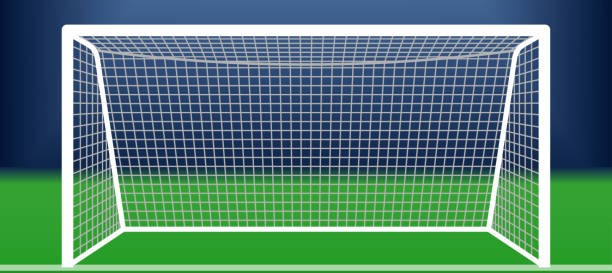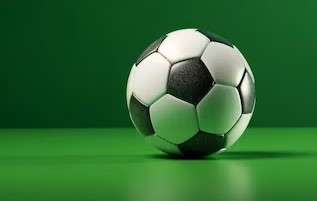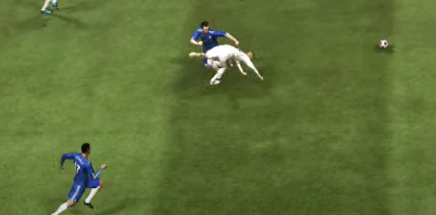













FOULS.

In football, a foul is an action by a player that violates the Laws of the Game, particularly concerning physical play,
behavior, or handling of the ball. Fouls can result in free kicks, penalty kicks, yellow cards, or red cards, depending
on the severity and location of the infraction. Here’s a detailed explanation of fouls in football:
Physical Fouls: These fouls occur when a player engages in improper or overly aggressive physical contact with an opponent.
- KICKING AN OPPONENT:
▫ If a player deliberately kicks or tries to kick an opponent in a dangerous or reckless manner, it is considered a foul.
- TRIPPING OR ATTEMPTING TO TRIP:
▫ If a player trips or attempts to trip an opponent, either with their legs or body, it is a foul.
- JUMPING AT AN OPPONENT:
▫ Jumping towards or into an opponent in an aggressive or dangerous way is a foul, especially if it endangers the safety of the
other player.
- CHARGING AN OPPONENT:
▫ Charging is when a player forcefully runs into an opponent with or without the ball. If done in a reckless manner or without
trying to win the ball, it is considered a foul.
- STRIKING OR ATTEMPTING TO STRIKE AN OPPONENT:
▫ Striking (punching, slapping, or hitting) or attempting to strike an opponent is a serious foul that can result in a red
card (ejection from the game).
- PUSHING:
▫ Using hands or body to push an opponent in order to gain an advantage is a foul.
- HOLDING:
▫ Holding or grabbing an opponent’s body, shirt, or equipment to impede their movement is not allowed and results in a foul.
- TACKLING FROM BEHIND:
▫ Tackling an opponent from behind, especially if it endangers the player, is considered a foul. Even if the ball is won,
tackling from behind is often penalized due to the danger involved.
- ILLEGAL USE OF ARMS OR ELBOWS:
▫ Using arms or elbows in an unfair or dangerous manner (e.g., elbowing an opponent in the face) is a foul. This often happens
in aerial challenges or when shielding the ball.
Handling Fouls: Handling fouls refer to the illegal use of hands or arms by players, particularly involving the ball.
- HANDBALL:
▫ A handball occurs when a player (other than the goalkeeper inside their penalty area) deliberately handles the ball with their
hand or arm.
▫ The key factor is whether the contact with the hand or arm was deliberate. Accidental handballs are not always penalized
unless they result in a goal or a significant advantage.
Fouls for Misconduct: These fouls occur due to unsportsmanlike behavior, verbal abuse, or breaking the rules in a
non-physical way.
- DISSENT:
▫ Arguing with the referee, showing dissent through words or actions, or protesting against decisions can result in a foul
and often a yellow card.
- UNSPORTING BEHAVIOR:
▫ This includes a wide range of actions like simulation (diving to win a free kick or penalty), time-wasting, or overly aggressive
behavior that is not in the spirit of the game.
- PERSISTENT INFRINGEMENT:
▫ A player who commits multiple small fouls in a short period of time may be penalized for persistent infringement, usually
resulting in a yellow card.
- RECKLESS OR DANGEROUS PLAY:
▫ Any action deemed reckless, such as high tackles or playing dangerously (e.g., raising a foot too high near an opponent’s head),
can lead to a foul and possibly a yellow or red card.
- OFFENSIVE OR ABUSIVE LANGUAGE:
▫ Using offensive, insulting, or abusive language or gestures toward another player, coach, referee, or fan is considered misconduct
and can lead to an immediate red card.
Off-the-Ball Fouls: Fouls committed away from the ball, such as pushing or holding an opponent during set plays (like corners
or free kicks), are also penalized even though the fouled player may not be in possession of the ball.
Consequences of Fouls: These fouls occur due to unsportsmanlike behavior, verbal abuse, or breaking the rules in a
non-physical way.
- FREE KICK: When a foul is committed outside the penalty area, the opposing team is awarded a free kick.
▫ DIRECT FREE KICK: A direct free kick is awarded when a more serious foul occurs (e.g., tripping, pushing, or handling the ball).
The player taking the free kick can score directly from the kick.
▫ INDIRECT FREE KICK: This is awarded for less serious offenses (e.g., dangerous play or obstruction). A goal cannot be scored directly
from an indirect free kick; the ball must touch another player first.
- PENALTY KICK: A penalty kick is awarded when a foul is committed by a defender inside their own penalty area. It gives the attacking
team an opportunity to score from a one-on-one situation with the goalkeeper from the penalty spot (12 yards from the goal).
- YELLOW CARD:
▫ A yellow card is given as a warning for misconduct or serious fouls. Common reasons for receiving a yellow card include reckless
tackles, dissent, unsporting behavior, and delaying the restart of play.
▫ A player who receives two yellow cards in the same match is shown a red card and sent off (ejected) from the game.
- RED CARD:
▫ A red card is shown for serious offenses such as violent conduct, serious foul play, or receiving a second yellow card in the
same match.
▫ A player who is shown a red card must leave the field immediately and cannot be replaced, leaving their team with one fewer player
for the rest of the game. Red card offenses include: Violent conduct (e.g., striking another player), Denying an obvious goal-scoring
opportunity (e.g., handling the ball or a foul as the last defender), Serious foul play (e.g., a dangerous two-footed tackle), Offensive
or abusive language or gestures.
Fouls in the Penalty Area:
- ▫ DEFENSIVE FOULS IN THE PENALTY AREA: If a defender commits a foul inside their own penalty area, the attacking team is awarded a penalty
kick, which is a prime opportunity to score. Examples of penalty-area fouls include tripping, pushing, or handball by the defending team.
- ▫ ATTACKING FOULS IN THE PENALTY AREA: If an attacking player commits a foul in the penalty area (e.g., charging the goalkeeper, or pushing
a defender), the defending team is awarded a free kick or goal kick, depending on the situation.
Offside and Foul Relationship: While offside isn’t classified as a foul, it results in an indirect free kick for the
opposing team. Being offside occurs when an attacking player is ahead of the last defender (excluding the goalkeeper) and receives the
ball when they are involved in active play. This violation doesn’t involve physical contact but is still penalized similarly to fouls.
Referee’s Role and Discretion:
- ▫ REFEREE'S JUDGEMENT: The referee has the authority to decide whether a particular incident is a foul and what level of punishment
it deserves (free kick, yellow card, or red card).
- ▫ ADVANTAGE RULE: The referee may choose to play advantage (allowing play to continue) if the team fouled has a better opportunity to continue
their attack than if play was stopped for a free kick. If no advantage develops, the referee can call the foul later.
Fouls and Fair Play: Fouls disrupt the game, but they’re also a part of football. Teams are encouraged to play fairly, avoid
unnecessary fouls, and respect both opponents and referees. Fair play is integral to maintaining the competitive but respectful spirit of
the game.
By understanding fouls, players can better manage their defensive actions, reduce the risk of penalties, and ensure they play within
the rules of the game.




























